-
 Bitcoin
Bitcoin $86,788.3469
1.91% -
 Ethereum
Ethereum $1,898.2348
-0.95% -
 Tether USDt
Tether USDt $1.0001
0.01% -
 XRP
XRP $2.1474
0.27% -
 BNB
BNB $603.9357
-0.82% -
 Solana
Solana $130.2309
1.79% -
 USDC
USDC $0.9999
0.00% -
 Dogecoin
Dogecoin $0.1724
-0.15% -
 Cardano
Cardano $0.6875
0.36% -
 TRON
TRON $0.2380
0.72% -
 Toncoin
Toncoin $4.0182
0.06% -
 Chainlink
Chainlink $13.9088
-2.72% -
 UNUS SED LEO
UNUS SED LEO $9.3925
0.39% -
 Stellar
Stellar $0.2719
-1.68% -
 Avalanche
Avalanche $19.5295
-0.62% -
 Sui
Sui $2.4484
-0.62% -
 Shiba Inu
Shiba Inu $0.0...01262
-1.71% -
 Hedera
Hedera $0.1704
-1.02% -
 Polkadot
Polkadot $4.1548
-1.00% -
 Litecoin
Litecoin $85.6080
0.71% -
 Bitcoin Cash
Bitcoin Cash $309.9792
-0.89% -
 MANTRA
MANTRA $6.3575
0.12% -
 Bitget Token
Bitget Token $4.6075
0.26% -
 Dai
Dai $0.9997
-0.02% -
 Ethena USDe
Ethena USDe $0.9999
0.02% -
 Hyperliquid
Hyperliquid $13.8730
3.24% -
 Pi
Pi $0.6785
-4.19% -
 Monero
Monero $219.8055
0.69% -
 Uniswap
Uniswap $6.2046
-1.00% -
 Aptos
Aptos $5.3848
-0.97%
Judgment of overbought and oversold signals in digital currency candlestick charts
Candlestick charts show price movements; overbought conditions (RSI > 70) may signal a correction, while oversold (RSI < 30) might indicate a rebound. Use with other indicators for accuracy.
Apr 01, 2025 at 11:14 am
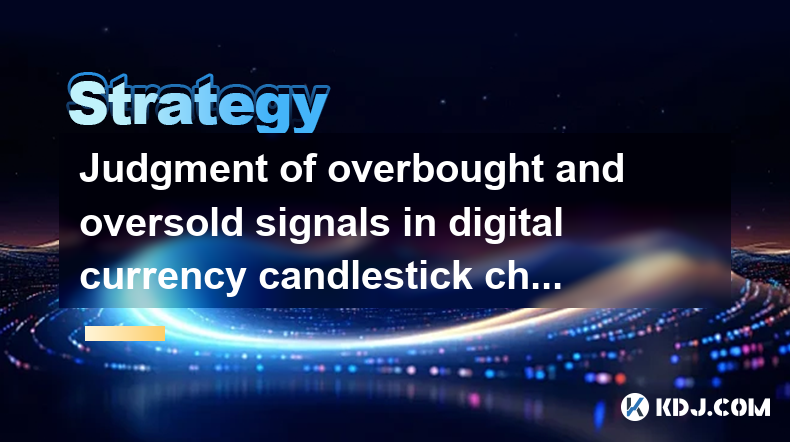
Understanding Candlestick Charts in Cryptocurrency Trading
Candlestick charts are a visual representation of price movements over a specific period. Each candle shows the open, high, low, and closing price. Understanding these price points is crucial for interpreting candlestick patterns and identifying potential overbought or oversold conditions. Traders use these patterns to anticipate potential price reversals, although it's important to remember that candlestick patterns are not foolproof predictors. They are most effective when used in conjunction with other technical indicators.
Identifying Overbought Conditions
An overbought condition suggests that an asset's price has risen rapidly and may be due for a correction. This doesn't guarantee a price drop, but it increases the probability. Several indicators can help identify overbought conditions on candlestick charts. These include looking for extended upward trends, the appearance of bearish reversal patterns (like evening stars or hanging men), and the use of oscillators like the Relative Strength Index (RSI). A sustained RSI above 70 is often considered overbought.
Identifying Oversold Conditions
Conversely, an oversold condition suggests that an asset's price has fallen significantly and might be ready to rebound. Again, this isn't a guarantee of an immediate price increase, but it raises the likelihood. Indicators for oversold conditions include prolonged downward trends, bullish reversal patterns (like morning stars or hammers), and oscillator readings. An RSI below 30 is often considered oversold. Remember, these are guidelines, not absolute rules.
Common Candlestick Patterns Indicating Overbought/Oversold Conditions
Several candlestick patterns offer clues about overbought or oversold conditions. These patterns are most reliable when considered within the broader context of the market and other technical indicators.
Doji: A Doji candle has an open and close price that are virtually identical, suggesting indecision in the market. In an uptrend, a Doji can signal a potential exhaustion of buying pressure (overbought). In a downtrend, it can signal potential exhaustion of selling pressure (oversold).
Hammer and Hanging Man: These are single candlestick patterns. A hammer, with a long lower wick and small body, suggests buying pressure overcoming selling pressure near the low of the day, often seen in oversold situations. A hanging man, similar in form but appearing at the top of an uptrend, suggests the opposite: selling pressure overwhelming buying pressure in an overbought market.
Shooting Star and Inverted Hammer: The shooting star is a bearish reversal pattern characterized by a long upper wick and small body, often appearing after an uptrend, indicating potential overbought conditions. The inverted hammer is the bullish counterpart, showing potential oversold conditions.
Engulfing Patterns: Engulfing patterns consist of two candles. A bullish engulfing pattern (a large green candle engulfing a previous red candle) can signal a potential reversal in an oversold market. A bearish engulfing pattern (a large red candle engulfing a previous green candle) can signal a potential reversal in an overbought market.
Using Indicators Alongside Candlestick Charts
While candlestick patterns provide valuable insights, relying solely on them is risky. Combining candlestick analysis with other technical indicators enhances accuracy.
Relative Strength Index (RSI): As mentioned earlier, the RSI is a momentum oscillator that measures the speed and change of price movements. Values above 70 suggest overbought conditions, while values below 30 suggest oversold conditions.
Moving Averages: Moving averages smooth out price fluctuations, helping to identify trends. Crossovers between different moving averages (e.g., a short-term moving average crossing below a long-term moving average) can confirm overbought or oversold signals suggested by candlestick patterns.
MACD (Moving Average Convergence Divergence): The MACD is another momentum indicator that identifies changes in the strength, direction, momentum, and duration of a trend. Divergences between the MACD and the price action can signal potential reversals in overbought or oversold markets.
Interpreting Signals and Managing Risk
Remember that overbought and oversold signals are not guarantees of price reversals. They indicate probabilities, not certainties. Always use stop-loss orders to manage risk. A stop-loss order automatically sells your asset if the price drops to a predetermined level, limiting potential losses. Never invest more than you can afford to lose. Consider diversifying your portfolio across different cryptocurrencies to mitigate risk.
Frequently Asked Questions
Q: Are overbought/oversold indicators always accurate?
A: No, overbought and oversold indicators are not always accurate. They provide probabilities, not certainties. Markets can remain overbought or oversold for extended periods, especially in strong trends. It's crucial to use these indicators in conjunction with other analysis methods.
Q: How do I determine the appropriate time frame for candlestick analysis?
A: The optimal timeframe depends on your trading style and risk tolerance. Shorter timeframes (e.g., 1-hour, 4-hour) are suitable for short-term traders, while longer timeframes (e.g., daily, weekly) are better suited for long-term investors.
Q: Can I use overbought/oversold signals for all cryptocurrencies?
A: While the principles apply broadly, the specific thresholds and interpretations might vary depending on the volatility and characteristics of individual cryptocurrencies. Some cryptocurrencies may exhibit frequent overbought/oversold conditions due to their inherent volatility.
Q: What other factors should I consider besides candlestick charts and indicators?
A: Fundamental analysis (examining the technology, team, and market adoption of a cryptocurrency), news events, and overall market sentiment are all crucial factors to consider alongside technical analysis. A holistic approach to trading is essential.
Q: Is it possible to combine different indicators for more accurate signals?
A: Yes, combining multiple indicators can provide more robust signals. For example, confirming an overbought signal from the RSI with a bearish candlestick pattern and a moving average crossover can increase the confidence in a potential price reversal. However, it is important to avoid indicator overload. Focus on a few key indicators that you understand well.
Disclaimer:info@kdj.com
The information provided is not trading advice. kdj.com does not assume any responsibility for any investments made based on the information provided in this article. Cryptocurrencies are highly volatile and it is highly recommended that you invest with caution after thorough research!
If you believe that the content used on this website infringes your copyright, please contact us immediately (info@kdj.com) and we will delete it promptly.
- Grayscale Launches Two New Bitcoin ETFs: BTCC and BPI
- 2025-04-03 02:05:12
- Bitcoin (BTCUSD) Has Been on an Upward Trajectory Despite Volatility in Crypto and Traditional Markets
- 2025-04-03 02:05:12
- Ripple Integrates Its USD-Backed Stablecoin to Cross-Border Payments System
- 2025-04-03 02:00:12
- Dogecoin (DOGE) Forms Inverse H&S Pattern, Presenting Immediate Breakout Targets
- 2025-04-03 02:00:12
- Retesting the 61.8% Fibonacci Retracement Level Could Be a Defining Moment for the SOL/USD Pair
- 2025-04-03 01:55:13
- Ozak AI (OZ) Could Be the Next 1000x Gainer, Not Gold
- 2025-04-03 01:55:13
Related knowledge
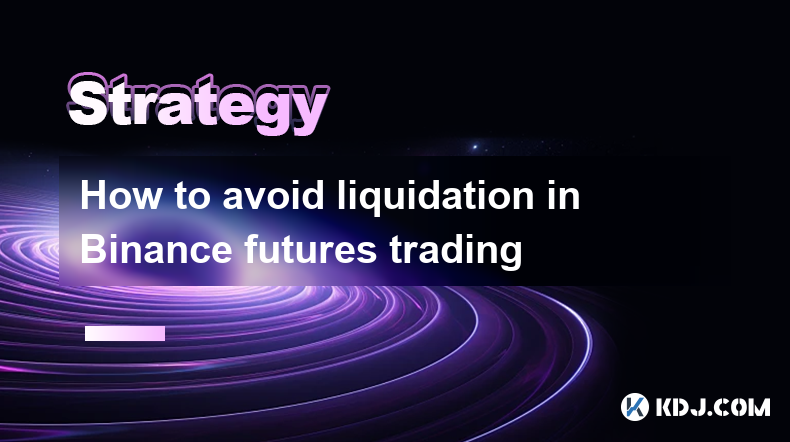
How to avoid liquidation in Binance futures trading
Apr 02,2025 at 10:28pm
Trading in Binance futures can be an exciting yet risky endeavor. One of the most significant risks traders face is liquidation, which occurs when the market moves against your position, and your account's margin balance falls below the maintenance margin requirement. To avoid liquidation, it's crucial to understand the mechanics of futures trading and ...
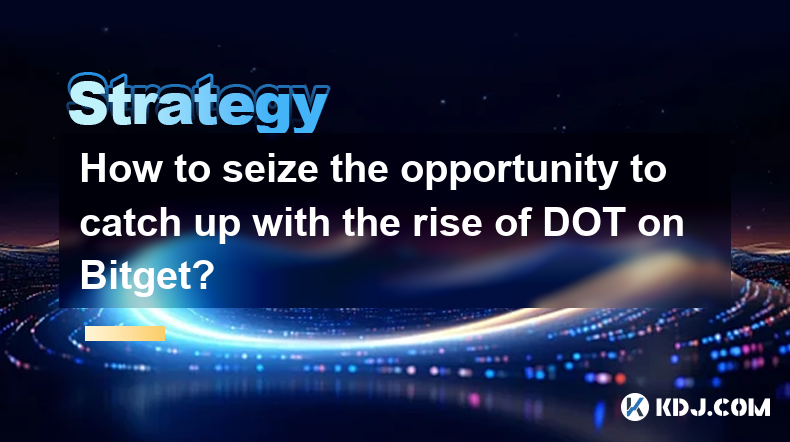
How to seize the opportunity to catch up with the rise of DOT on Bitget?
Mar 31,2025 at 07:29pm
Understanding the DOT/Bitget OpportunityPolkaDot (DOT) is a prominent cryptocurrency known for its innovative cross-chain interoperability solutions. Bitget is a well-established cryptocurrency exchange offering a variety of trading options, including DOT trading pairs. Seizing opportunities within this pairing requires understanding market dynamics, r...
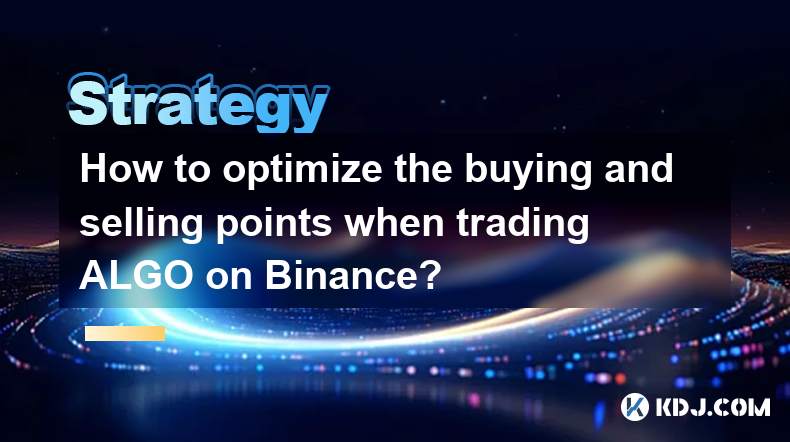
How to optimize the buying and selling points when trading ALGO on Binance?
Mar 31,2025 at 12:28am
Understanding ALGO Price Volatility on BinanceAlgorand (ALGO) price, like most cryptocurrencies, is highly volatile. Successful trading requires understanding these fluctuations and identifying optimal entry and exit points. This involves analyzing market trends, using technical indicators, and managing risk effectively. Ignoring these factors can lead...
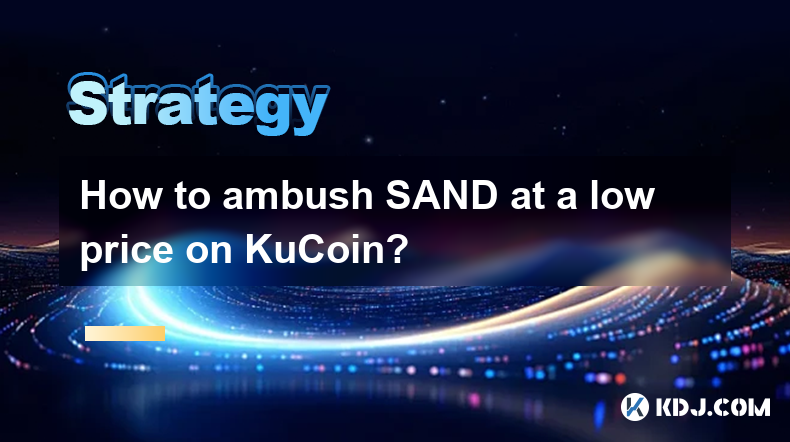
How to ambush SAND at a low price on KuCoin?
Apr 02,2025 at 06:22am
Understanding the SAND Price VolatilityThe Sandbox (SAND) token, like most cryptocurrencies, experiences price fluctuations. These fluctuations are influenced by various factors, including market sentiment, technological developments within the Sandbox metaverse, broader cryptocurrency market trends, and news impacting the overall blockchain space. Suc...
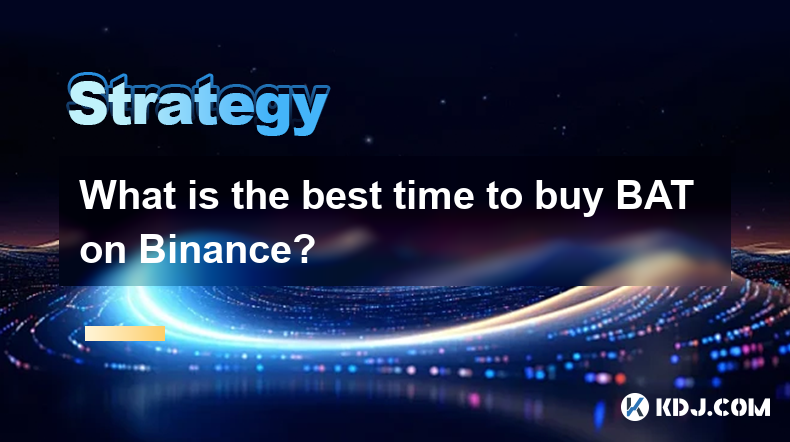
What is the best time to buy BAT on Binance?
Apr 01,2025 at 02:07am
There's no single 'best' time to buy Basic Attention Token (BAT) on Binance, or any cryptocurrency for that matter. The cryptocurrency market is incredibly volatile, influenced by a multitude of factors, making precise prediction impossible. Timing the market perfectly is a fool's errand. Instead, focus on a long-term strategy and consider your persona...
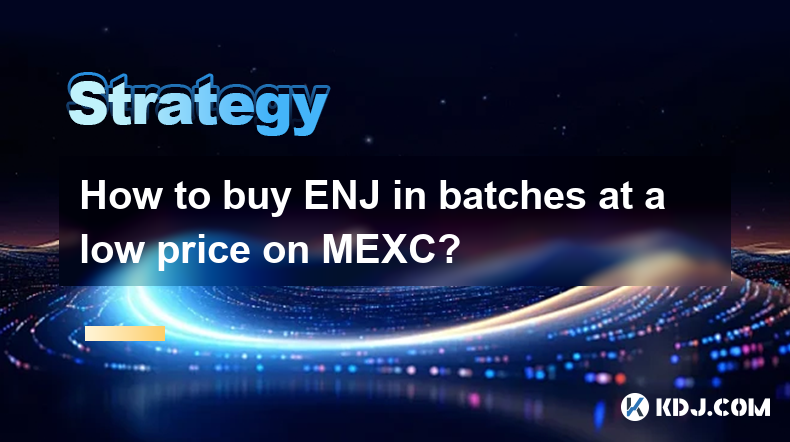
How to buy ENJ in batches at a low price on MEXC?
Mar 30,2025 at 10:28am
Understanding Batch Buying and Price FluctuationsBuying ENJ (Enjin Coin) in batches on MEXC, or any exchange, aims to mitigate the risk of buying high. Cryptocurrency prices are incredibly volatile. Purchasing a large amount at once exposes you to significant losses if the price drops immediately after your purchase. Batch buying spreads out your inves...

How to avoid liquidation in Binance futures trading
Apr 02,2025 at 10:28pm
Trading in Binance futures can be an exciting yet risky endeavor. One of the most significant risks traders face is liquidation, which occurs when the market moves against your position, and your account's margin balance falls below the maintenance margin requirement. To avoid liquidation, it's crucial to understand the mechanics of futures trading and ...

How to seize the opportunity to catch up with the rise of DOT on Bitget?
Mar 31,2025 at 07:29pm
Understanding the DOT/Bitget OpportunityPolkaDot (DOT) is a prominent cryptocurrency known for its innovative cross-chain interoperability solutions. Bitget is a well-established cryptocurrency exchange offering a variety of trading options, including DOT trading pairs. Seizing opportunities within this pairing requires understanding market dynamics, r...

How to optimize the buying and selling points when trading ALGO on Binance?
Mar 31,2025 at 12:28am
Understanding ALGO Price Volatility on BinanceAlgorand (ALGO) price, like most cryptocurrencies, is highly volatile. Successful trading requires understanding these fluctuations and identifying optimal entry and exit points. This involves analyzing market trends, using technical indicators, and managing risk effectively. Ignoring these factors can lead...

How to ambush SAND at a low price on KuCoin?
Apr 02,2025 at 06:22am
Understanding the SAND Price VolatilityThe Sandbox (SAND) token, like most cryptocurrencies, experiences price fluctuations. These fluctuations are influenced by various factors, including market sentiment, technological developments within the Sandbox metaverse, broader cryptocurrency market trends, and news impacting the overall blockchain space. Suc...

What is the best time to buy BAT on Binance?
Apr 01,2025 at 02:07am
There's no single 'best' time to buy Basic Attention Token (BAT) on Binance, or any cryptocurrency for that matter. The cryptocurrency market is incredibly volatile, influenced by a multitude of factors, making precise prediction impossible. Timing the market perfectly is a fool's errand. Instead, focus on a long-term strategy and consider your persona...

How to buy ENJ in batches at a low price on MEXC?
Mar 30,2025 at 10:28am
Understanding Batch Buying and Price FluctuationsBuying ENJ (Enjin Coin) in batches on MEXC, or any exchange, aims to mitigate the risk of buying high. Cryptocurrency prices are incredibly volatile. Purchasing a large amount at once exposes you to significant losses if the price drops immediately after your purchase. Batch buying spreads out your inves...
See all articles
























































































